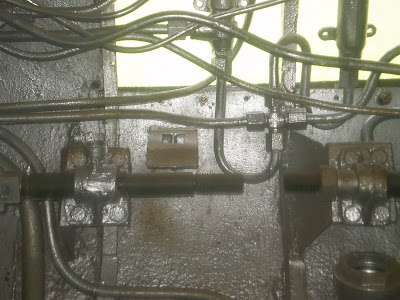
It’s very easy to see in Alex Beecroft’s novel “False Colors” the influence of Patrick O’Brien, whom she credits for inspiration in her acknowledgements. Not only does Ms. Beecroft neatly capture O’Brien’s vivid depictions of life aboard an eighteenth century sailing vessel, she also picked up his annoying penchant for peppering his stories with nautical lingo, such as “Set boommain sail and trysail”, “out sweeps” and “She’s a big xebec”. It gives the stories the fantastic realism, but a foreign language to us landlubbers.
But Beecroft’s novel is an easier read than O’Brien with rich prose and with feelings and emotions of well-developed characters. It’s a credit to the author when she creates a set of characters that the reader can relate to and sympathize with. And even dislike.
I did not like Alfie Donwell.
Although there is copious information and documentation about the culture at sea during the eighteenth century, very little has been written about gay sailors. “Sodomy and the Pirate Tradition” by Barry Burg and “Rum, Sodomy and the Lash” by Hans Turley are two works that explore this aspect but without much hard (pardon the pun) evidence, gay sex at sea during this period remains enigmatic. If we believe the authors it was inevitable, yet few sailors kept a log and even less wrote about any such encounters at sea.
However, Beecroft makes sexually active sailors a normal part of the social environment albeit barely tolerated and punished by court martial and hanging. It seemed everyone knew they existed but no one cared as long as the money came in, the rum flowed and the order of the Royal Navy was maintained. But were there really gay bars in eighteenth century Jamaica?
If so, the attitudes have changed little in the past three hundred years. That’s why I took a dislike to the petty and shallow Donwell, who had impossibly high standards for lovers. Beecroft made him too real, to the point that he became someone I knew.
Captain Farrant as well.
Gay rights may have progressed but gay men haven’t. Still this is partly what makes “False Colors” such a good read. The author’s talent for telling a story and telling it with style is the rest.
The only drawback to this gay romance was the largest portion of the story the two main characters were estranged. In the first eighty pages, they find each other and then become estranged.
Several episodes pass where reconciliation came close, only to be snatched away by petty and tiresome ideals and suspicions. The reader begins to wonder if John Cavendish and Donwell will ever reconcile or will their egos destroy their chances of love. It isn’t until the last pages of the book when kiss (among other things) and make up.
And what was the purpose of the trip to the Arctic? Whaling? Exploration? Scientific research?
Bottom line, I liked “False Colors” enough for me to recommend it to anyone. Die-hard O’Brien fans may flinch at the gay romance but the love of the sea and its yarns call everyone.










































 The conning tower is an eight feet diameter cylinder located above the control room of a submarine’s pressure hull. The conning tower contained equipment for steering the submarine and firing torpedoes. It was the command center of a WWII submarine and the battle station for the commanding officer.
The conning tower is an eight feet diameter cylinder located above the control room of a submarine’s pressure hull. The conning tower contained equipment for steering the submarine and firing torpedoes. It was the command center of a WWII submarine and the battle station for the commanding officer.





